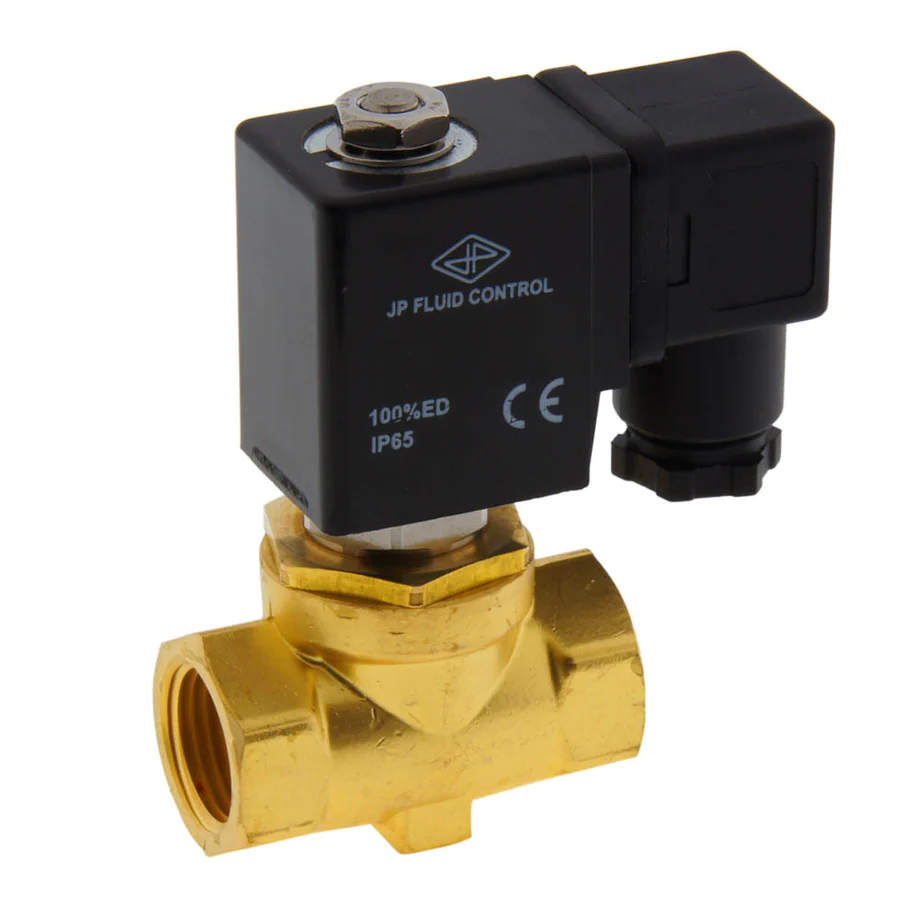Selecting the correct solenoid valve is crucial for efficient and safe fluid control in various applications. This article provides an overview of the factors influencing solenoid valve selection and guidance on choosing the appropriate valve depending on specific requirements.
Assessing Application Requirements
To choose the right solenoid valve, first determine the goal of fluid control in your system, such as on/off control, flow regulation, or pressure control. Identify the type of media being controlled (gas, liquid, or steam) and consider the operating environment and conditions, including temperature, pressure, and flow rate. Solenoid valves are commonly used in industries like water treatment, HVAC systems, industrial automation, and agriculture.
Understanding the Main Types of Solenoid Valves
Solenoid valves are categorized into direct-acting, indirect-acting (pilot-operated), and semi-direct acting valves. Direct-acting valves rely on a magnetic force to open or close the valve and are suitable for low-pressure applications, offering rapid response times and high reliability. Indirect-acting valves use a pressure difference across the valve to open or close, which makes them ideal for high-pressure applications but can result in slower response times. Semi-direct acting valves combine features of both direct and indirect-acting valves, offering versatility in installations with varying pressure conditions.
Matching Valve Material with Media
Choose a valve material compatible with the media being controlled. Brass valves are suitable for neutral media, such as air or water, and are affordable and easy to machine. Stainless steel valves provide high strength and corrosion resistance, making them appropriate for aggressive or corrosive media like fuels or strong chemicals. Plastic valves, such as PVC, offer excellent chemical resistance when dealing with aggressive chemicals and can be a lightweight and cost-effective option.
Determining Appropriate Seals
Select a seal material that is compatible with the media and can operate within the required temperature range. Common seal materials include NBR (nitrile), which offers good resistance to oils and chemicals; EPDM (ethylene propylene diene monomer), suitable for hot water, steam, and alkaline media; FKM (fluorocarbon rubber), which has excellent heat and chemical resistance; and PTFE (polytetrafluoroethylene), which provides superior chemical resistance and a wide temperature operating range.
Evaluating Connection Types
Consider the type of connection required for your application. Threaded connections, such as NPT, BSP, and metric threads, are widely used and can be easily installed and maintained. Compression fittings offer a reliable, leak-free connection without the need for additional sealing materials, but may require specialized tools for installation. Flange connections provide a secure, high-pressure seal and are ideal for large pipe sizes, but may be more complex and costly to install and maintain.
Considering Operational Parameters
Evaluate the required pressure range, applicable temperature range, and desired flow rate to ensure the solenoid valve meets the operational parameters of your system.
Taking Electrical Requirements into Account
Ensure the solenoid valve is compatible with the available voltage and consider its power consumption. Verify that the electrical connector used with the valve is also compatible with your system.
Additional Features and Certifications
Some solenoid valves offer additional features or certifications, such as a manual override function for manual control, explosion-proof ratings for use in hazardous environments, or energy-efficient options for reduced energy consumption.
Sizing the Solenoid Valve
To select the correct solenoid valve size, calculate the required orifice size, flow coefficient (Cv), and pressure drop for your application. These calculations involve factors such as flow rate, inlet and outlet pressures, and specific gravity of the media. Properly sizing the valve ensures optimal performance and minimizes energy consumption.
Fail-safe Configurations
Understanding the concepts of ‘normally open,’ ‘normally closed,’ and ‘universal’ solenoid valves can help you choose the appropriate configuration for your application. Normally open valves remain open when not energized, while normally closed valves remain closed when not energized. Universal valves can be configured as either normally open or normally closed, offering flexibility in system design.
Maintaining Your Solenoid Valve
Proper maintenance and troubleshooting of your solenoid valve can extend its lifespan and ensure optimal performance. Regular cleaning, inspection, and replacement of components, such as seals and coils, are important for maintaining valve functionality. Establishing a maintenance schedule based on the manufacturer’s recommendations can help prevent unexpected failures and downtime.
Conclusion
A thorough evaluation of your application’s requirements is essential for selecting the suitable solenoid valve. By considering factors such as media type, valve material, seal compatibility, connection types, and operational parameters, you can ensure the chosen valve will meet the specific needs of your fluid control system.

